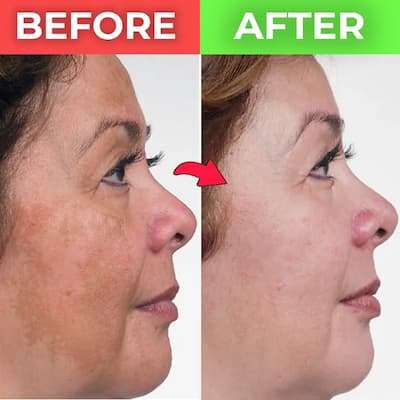What is Melasma?
Melasma is a skin condition that mostly affects women, especially those with darker skin. It often appears on the face as dark spots and patches with uneven edges. Melasma is not dangerous to your health. However, it can lead to emotional problems. It may also reduce your quality of life because it affects how you look.
Melasma is a common skin condition that affects approximately 1% of the general population. However, this percentage can increase to 50% among higher-risk groups, particularly those with darker skin tones. Often referred to as the “mask of pregnancy,” melasma can be triggered by hormonal changes during pregnancy. Additionally, hormonal medications such as birth control pills can also lead to its development. Sun exposure is another significant factor in causing melasma.
Can melasma be prevented?
Melasma cannot be completely prevented in individuals who are predisposed to this condition due to factors such as genetics, skin type, hormonal changes, or sun exposure levels. To help reduce the risk of melasma flare-ups and lower the likelihood of recurrence after treatment, it’s important to avoid direct sun exposure during peak hours (from 10 a.m. to 4 p.m.), consistently use high-SPF sunscreens, and refrain from hormonal medications when possible. Strict sun protection is the foundation of any effective melasma treatment plan.

Can melasma be treated?
Currently, there is no cure for melasma; however, several medications and procedures are available to help manage this condition. It’s important to understand that these treatment options may lead to an incomplete response, meaning that some areas of discoloration may become lighter or disappear while others remain unchanged. Additionally, frequent relapses are common.
Be aware of potential side effects of treatment, which can include darkening of the skin due to inflammation caused by the treatment or excessive lightening in the treated area. Working with a dermatologist and using the appropriate medications can help you achieve your treatment goals and maintain results with fewer relapses.
What sunscreen should melasma patients use?
Choosing the right sunscreen is crucial for individuals with melasma, as broad-spectrum tinted sunscreens, particularly those with iron oxide, can reduce pigment production by blocking visible light and UVA/UVB rays. Cosmetic products like foundations that contain these blockers can help conceal dark spots and provide sun protection, reducing the psychosocial effects of melasma. It’s important for those with melasma to be aware that visible light can penetrate windows, leading to potential flares even when not directly in sunlight.
What are Common melasma treatments?
The primary treatments for melasma are topical skin-lightening medications, such as hydroquinone, azelaic acid, kojic acid, niacinamide, cysteamine, rucinol, and tranexamic acid, which aim to decrease pigment production and inflammation. Pregnant women should avoid most of these treatments, with azelaic acid being a safe option. Hydroquinone is effective but should be used for a limited duration due to potential side effects. Combination therapy, often involving hydroquinone with a retinoid and a steroid, is typical, and oral medications like tranexamic acid may be used for more severe cases.
What Additional treatment procedures may help
If topical or oral medications for melasma aren’t effective, procedures like chemical peels and laser therapies may help. Chemical peels use acids to remove the top skin layer with excess pigment, but their effects are temporary as they don’t stop pigment production in deeper layers. Laser therapies can target and destroy pigment cells, lightening dark spots, but there’s a risk of relapse after treatment.
Which Maintenance therapy and prevention
After improving melasma lesions, it is essential to continue with strict sun protection and maintenance therapy. In addition to hydroquinone, other skin lighteners can be used in combination with retinoids to help maintain the results. If necessary, hydroquinone therapy can be applied intermittently.
What Takeaway message about melasma
The most important aspect of managing melasma is to consistently use sun protection and to avoid other triggers, such as hormonal medications, when feasible. Since none of the available treatments can completely cure melasma, prevention is the best strategy. Individuals with melasma should consult a board-certified dermatologist for evaluation and to receive appropriate treatment plans aimed at managing melasma effectively while maintaining treatment results.